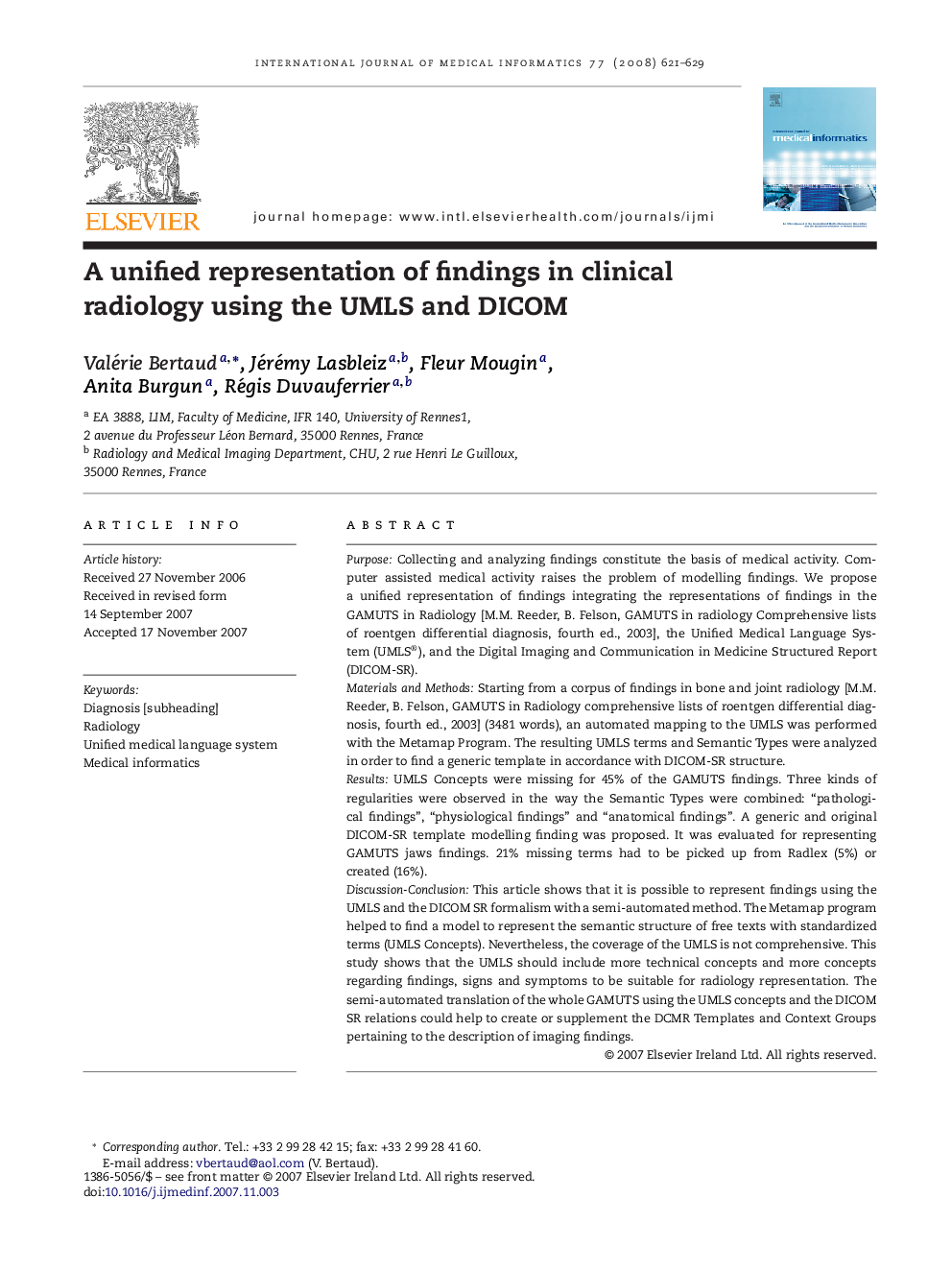| Article ID | Journal | Published Year | Pages | File Type |
|---|---|---|---|---|
| 517073 | International Journal of Medical Informatics | 2008 | 9 Pages |
PurposeCollecting and analyzing findings constitute the basis of medical activity. Computer assisted medical activity raises the problem of modelling findings. We propose a unified representation of findings integrating the representations of findings in the GAMUTS in Radiology [M.M. Reeder, B. Felson, GAMUTS in radiology Comprehensive lists of roentgen differential diagnosis, fourth ed., 2003], the Unified Medical Language System (UMLS®), and the Digital Imaging and Communication in Medicine Structured Report (DICOM-SR).Materials and MethodsStarting from a corpus of findings in bone and joint radiology [M.M. Reeder, B. Felson, GAMUTS in Radiology comprehensive lists of roentgen differential diagnosis, fourth ed., 2003] (3481 words), an automated mapping to the UMLS was performed with the Metamap Program. The resulting UMLS terms and Semantic Types were analyzed in order to find a generic template in accordance with DICOM-SR structure.ResultsUMLS Concepts were missing for 45% of the GAMUTS findings. Three kinds of regularities were observed in the way the Semantic Types were combined: “pathological findings”, “physiological findings” and “anatomical findings”. A generic and original DICOM-SR template modelling finding was proposed. It was evaluated for representing GAMUTS jaws findings. 21% missing terms had to be picked up from Radlex (5%) or created (16%).Discussion-ConclusionThis article shows that it is possible to represent findings using the UMLS and the DICOM SR formalism with a semi-automated method. The Metamap program helped to find a model to represent the semantic structure of free texts with standardized terms (UMLS Concepts). Nevertheless, the coverage of the UMLS is not comprehensive. This study shows that the UMLS should include more technical concepts and more concepts regarding findings, signs and symptoms to be suitable for radiology representation. The semi-automated translation of the whole GAMUTS using the UMLS concepts and the DICOM SR relations could help to create or supplement the DCMR Templates and Context Groups pertaining to the description of imaging findings.
